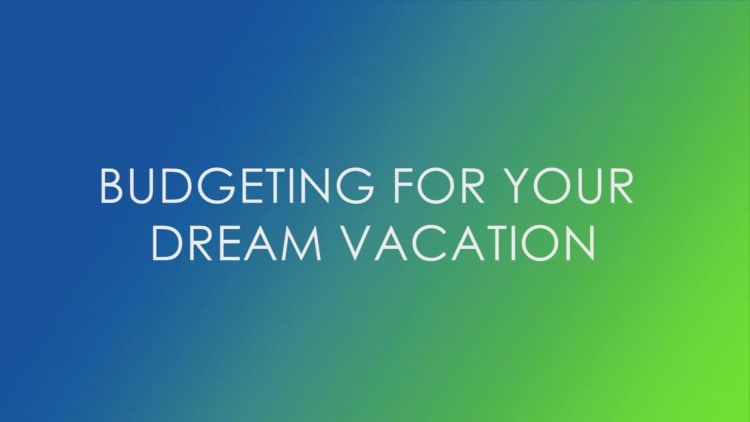
Vacations offer a short-lived thrill. Any debt you rack up to cover the cost can last for years.
Americans spend an average of $1,979 on summer getaways, according to data from personal finance site Bankrate.com.
While using plastic can help simplify the booking process, financing the entirety of your trip could hobble your finances, particularly if it takes you a long time to zero out your balance.
Close to 4 in 10 credit card users have been carrying debt for at least two years, according to CreditCards.com.
Just carrying a balance will cost you money, since the average credit card interest rate is 17.3%.
But you can avoid a sea of red ink if you're willing to prepare well ahead of your flight.
"When I'm thinking about booking my dream vacation, I'm thinking about building a budget," said Winnie Sun, managing director of Sun Group Wealth Partners in Irvine, California.
Here are three steps to get started.
1. Find the biggest cost drivers
Months before you start packing, start crunching the numbers on your expected costs.
"The best way to do this is to start at the basics, which means looking at the most expensive pieces of your dream vacation," said Sun.
Generally, lodging and transportation will make up the costliest components.
For instance, travel costs for a 12-night international jaunt average around $1,755, according to ValuePenguin, a personal finance site.
Plan well in advance and be open to traveling during off-peak times or "shoulder season," as that's when flights and lodging can be especially cheap.
For instance, the nightly cost of a vacation rental in Ocean City, New Jersey, falls to $296 from $417 if you travel in September instead of August, according to Vrbo, the vacation rental site.
2. Plot out your excursions
Small expenses, including rideshare travel, can quickly add up.
Even those meals on the go can hurt your wallet. For example, travelers in the U.S. spend an average of $27 at restaurants and $6 on food they prepare themselves, according to ValuePenguin.
Come up with a schedule of your tourist stops and think about how you'll get there. This way you avoid spur-of-the-moment trips that will throw off your budget.
"I recommend getting out a notepad and make a list of all the things you want to do," said Sun.
Yelp, Expedia and TripAdvisor can all help draft your to-do list, she said.
3. Save early and aggressively
Here's an incentive to give yourself plenty of time to prepare for your travel: You'll have time to sock money away and avoid credit card debt.
"If you know what your big costs are going to be beforehand, save up enough so that you're able to pay for at least 85% of the cost about three months before you leave," said Sun.
This way, you'll return from your trip with a clear mind and a clean balance sheet.
More from Invest in You:
Houston Texans' Whitney Mercilus reveals what he's doing with his $54 million contract
The essential steps to investing like a Wall Street ninja
27-year-old millionaire: Here's how to earn seven figures






